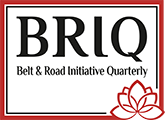EDITORIAL
The Global South Calls for Cooperation, Development, and Peace Amid NATO's Belligerent Actions
NATO, established in 1949 as the primary military organization of the Atlantic Alliance, initially comprised 12 member countries. Over time, the Alliance has undergone several transformations, with its most recent strategic concept adopted on June 30, 2022. By April 2023, the number of members had grown to 31, following a new wave of expansion in the post-Cold War era.
The notable aspect of NATO’s new concept lies in its transformation into a global organization. It recognizes that the “communist threat” of the Cold War era has been replaced by the revisionist attitude of Russia, China, and those aligned with them. Both the current US national security document and NATO's 2022 Strategic Concept emphasize the global struggle between democracy and autocracy.
According to this perspective, the Atlantic Alliance and its allies align themselves on the "democracy front," while states led by Russia and China are portrayed as part of the "autocracy front." The criterion used by the US and NATO to categorize governments in non-allied countries as "autocracies" or "democracies" hinges on whether they align with the Atlantic Alliance's interests. Consequently, under this front-oriented strategy, the rest of the world is perceived as being on the opposing side.
As the world moves towards a multipolar landscape, it is noteworthy that the United States is asserting its claim as the sole pole to its allies, particularly in Europe, and to the rest of the world. This imposition runs counter to the objective interests of its allies. In its pursuit to maintain unipolarity and dollar hegemony, US leadership aims to transform NATO into a global war apparatus. This is done under the pretext of promoting "democracy/human rights" and other similar ideals. The Atlantic Alliance, along with NATO and other partnerships, exerts interference in the internal affairs of nations, seeks economic dominance, and promotes a political culture of belligerency. In contrast, nation-states that adhere to the principles of the UN Charter prioritize peace and cooperation as their interests. Developing countries across Asia, Africa, and South America are gravitating towards cooperation in alignment with their objective interests.
The current scenario exemplifies a clash between two divergent strategies in the international arena. On one hand, there is the pursuit of Atlantic hegemony and the imposition of war. On the other hand, developing countries are staunchly advocating for a peaceful global order. They fortify their national states against hegemonic influences and promote cooperation based on principles such as mutual respect, non-interference in internal affairs, common development, and shared progress. This constructive initiative, being gradually built within the developing world, is gaining increasing influence and serves the best interests of humanity.
FİKRET AKFIRAT
Editor-in-Chief
